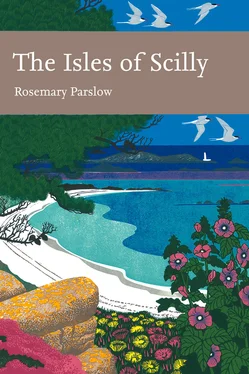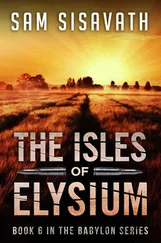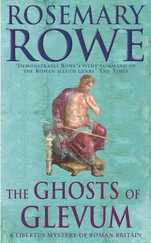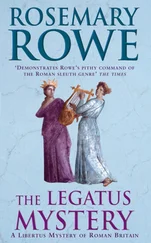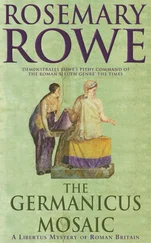FIG 8.Ram shelf at the base of the cliff on Samson. (Rosemary Parslow)
FIG 9.An example of a raised beach at Porth Killier, St Agnes, where former beach levels can be seen above the present beach. May 2003. (Rosemary Parslow)
Raised beaches are especially common throughout the southwest of Britain, and the Isles of Scilly have many examples. The raised beach at Watermill is a classic site with a conglomerate of clast-supported rounded cobbles and boulders, overlain by well-sorted medium sand (Selwood et al., 1998). There are many places all around the coasts in Scilly where former shore levels with beach deposits are exposed in the cliffs above the present beaches. There are raised beaches at Hell Bay, Bryher; Porth Killier, St Agnes (Fig. 9); Piper’s Hole, Tresco; Shipman Head, Bryher and many other places.
Although it was long thought that glaciation had missed Scilly, there is evidence that a tongue of ice from the southern edge of the Late Devensian ice sheet, the Irish Sea Ice Stream, probably reached the northern islands of Scilly 18,000 years BP (before present), eventually leaving deposits on White Island off St Martin’s, and on Northwethel (Scourse et al., 1990). The evidence for this lies in a great variety of rocks exotic to Scilly such as flint, sandstone and associated ‘erratics’. The best example of glacial till in the islands is within the Bread and Cheese
FIG 10.The bar to White Island is a former glacial feature, probably a glacial moraine. June 2002. (Rosemary Parslow)
formation at Bread and Cheese Cove SSSI on the north coast of St Martin’s: the overlying gravels, the Tregarthen and the Hell Bay gravels, are interpreted as glaciofluvial and solifluction deposits respectively. There are erratic assemblages with both deposits (Selwood et al., 1998). Recent work suggests that some of these deposits, such as that at Bread and Cheese Cove, may not be in their original positions (Hiemstra et al., 2005). Other sites with glacial links occur in the bars in the north of the islands, such as the ones at Pernagie, the one connecting White Island to St Martin’s (Fig. 10), and Golden Bar, St Helen’s: these are probably glacial moraines, not marine features (Scourse, 2005).
EARLY HISTORY – THE SUBMERGENCE
Twenty thousand years ago most of Britain was under the last glaciation, extending as far south as the Wash and south Wales. At this time sea level would have been as much as 120m below Ordnance Datum. Then the climate ameliorated and by 13,000 BP the Devensian ice had almost disappeared (Selwood et al., 1998).
Four thousand years ago, before the sea inundated the land, Scilly would have had a very different landscape, with low hills and sand dunes surrounding a shallow plain (Fig. 11). Based on the present-day undersea contour lines, there would at that time have been three main islands: the principal one would have included the present-day St Mary’s, Tresco, Bryher and St Martin’s, the Norrard Rocks, the Eastern Isles and the St Helen’s group; Annet and St Agnes would have made up a smaller second island group; and the Western Rocks would have been the third. Later the islands became parted as the sea rose still further. The long isolation of St Agnes from St Mary’s and the rest of Scilly may possibly explain the differences in the flora – for example why the least adder’s-tongue fern Ophioglossum lusitanicum is restricted to St Agnes.
Most accounts of the submergence of the Isles of Scilly are based on the model proposed by Thomas in Exploration of a Drowned Landscape (1985). Thomas suggests that sea level rose rapidly and reached to within a few metres of present-day levels by 6000 BP, although final submergence of the island of Scilly to
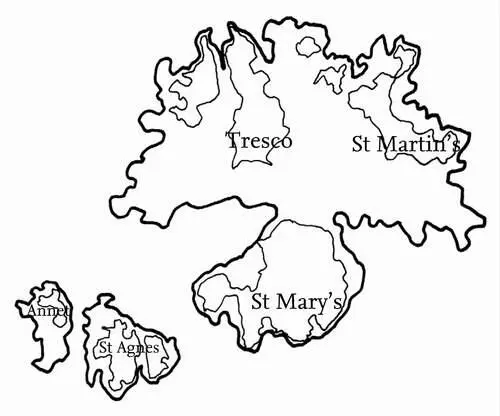
FIG 11.A map showing how the main islands may have appeared prior to the submergence. (After Thomas, 1985)
create the present archipelago may not have been effected until post-Roman times. Archaeological and historical evidence show that although sea was rising on a unitary island about 2000 BC, ‘submergence began in earnest during Norman times and was effectively completed by the early Tudor period’ (Thomas, 1985; Selwood et al., 1998). However, Thomas recognised that although his model assumes a gradual process of submergence, there is an alternative picture with a series of dramatic events such as tidal surges. According to Ratcliffe and Straker (1997), submergence may have been even more gradual than Thomas proposes. The most controversial aspect of Thomas’s model is his suggestion that separation of the islands did not occur until early Tudor times. Although the exact details of when and how the marine inundation took place are unclear, remains of huts, walls and graves on areas now covered by the sea are irrefutable evidence that it took place.
During glaciation, land south of the ice sheet would have been bare tundra, cold, with sparse vegetation and probably few animals (Yalden, 1999), and certainly few that are still found in Britain today. It is difficult to imagine what Scilly was like at the time of the earliest human visitors, who were probably Mesolithic hunter-gatherers who left only a few flints as evidence of their passing. We have already seen that the islands would have been a considerably larger landmass than the present-day scatter of islands. Much of the land was covered in birch woodland, sparse grassland and marshy land with sedges. These conditions of the Mesolithic period persisted across southern Britain, then part of Continental Europe, and most of the steppe species that were present then have either died out or retreated to more northerly areas. During the Neolithic period people may have started to settle in Scilly and begun clearing the land, but pollen evidence shows some forest clearance was followed by woodland regeneration and agricultural decline. There are a few artefacts from this time, but it is likely these were only temporary occupations (Ratcliffe & Johns, 2003).
EARLY MAMMALS AND OTHER FAUNA
Very few remains of the early fauna of the islands have been found, but one small rodent, the root or Pallas’s vole Microtus oeconomus (very similar to our field vole M. agrestis ) was present, as was the red deer Cervus elaphus , and both were still present in Scilly in the Bronze Age.
Modern Scilly is poor in mammal species, and the written records are sparse. Bones found in the Iron Age sections of the excavations on Nornour included Scilly shrew, wood mouse or long-tailed field mouse Apodemus sylvaticus and root vole. The first two are still extant in Scilly, but the root vole is believed to have become extinct at some later period, no remains having been found after Romano-British times (Turk, 1984; Ratcliffe & Straker, 1996). Root voles are no longer found in Britain although there are isolated (relict) populations still in the Netherlands, Scandinavia and eastern Europe (Mitchell-Jones et al., 1999). In late summer 1978 my daughter and I found a vole mandible and two molars in storm debris on the boulder beach below the Porth Killier Bronze Age midden, along with scraps of bone and shards of coarse pottery. These were sent to the Natural History Museum, where the vole remains were identified as root vole (Gordon Corbet, in litt .). Later, in 1982, I had the opportunity to go to Hungary and was able to visit root vole habitat near Lake Kolon, in Kiskunsági National Park. This is an area of rough grassland and Phragmites swamp, which would seem to be typical habitat of the vole. An interesting note by Mitchell-Jones et al. (1999) is that root voles migrate from wetland to dunes or drier habitats in winter, and even into houses.
Читать дальше
